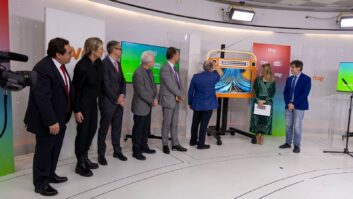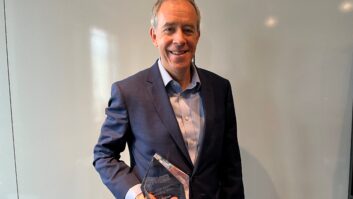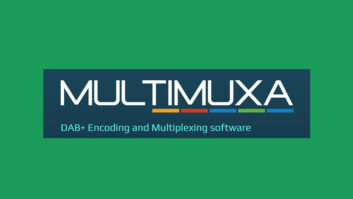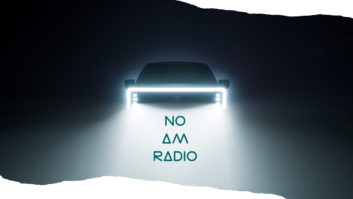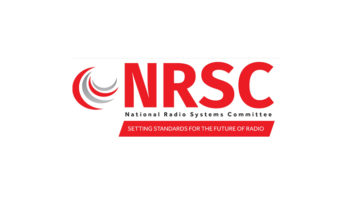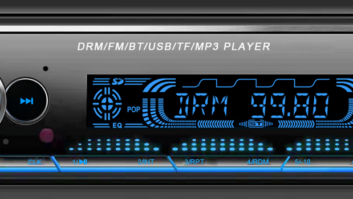Advanced DAB
Apr 1, 2005 12:00 PM
This letter was received in response to the Viewpoint in the January 2005 issue of Radio magazine. That editorial discussed the various forms of DAB currently in development.
From the information to hand, DRE is the least likely system to go places:
- Using an FM subcarrier instead of Ibiquity’s COFDM will make the digital signal far more fragile, prone to break-up and total loss when received in the car. Digital systems take a considerable amount of time to recover from such break-up. Instant loser.
- Cost of implementation, where DRE does offer some advantage, is not the biggest hurdle for DAB. The question for today is whether HD Radio offers enough benefits to get the consumer to buy digital receivers.
Does latecomer DRE have some unique selling point for the consumer? Apparently, quite the opposite. So next, does HD Radio actually offer enough benefits to get U.S. consumers to buy receivers? In the long run, I think the answer is yes. The salient points are:
- Multipath problems with high-power analog FM
- The sonic drawbacks of 75us FM de-emphasis
- The great sound quality and robust signal of HD Radio
- Possibilities of additional services on digital radio
Don’t be misled by the apparent quiet prevailing in the market for digital radios right now. It will take a year or a few years to get going, and this won’t happen until receivers are in the shops at well under $200. Make that $100 to really get the numbers going, but the industry will make it happen.
In the UK you can get a brand new Eureka-DAB receiver for less than $100 already. The UK is probably five years ahead of the U.S. in digital radio (transmissions have been on the air for 10 years), but our market is tiny, only 20 percent of the size. That’s a huge factor in economies of scale at the start. And DSP technology has developed tremendously since the UK switched on ten years ago, giving second-generation DAB systems a considerable boost on cost, power consumption and deployment time. So the sub-$100 HD Radio receiver within a year or two really is no problem at all. At that time, digital audio broadcasting will surely come to the fore.
The success of satellite radio in the U.S. will also be a telling factor. If they can recognize trouble when they see it coming, the regular broadcasters must feel the imperative to respond somehow. While a technological fix is not the whole answer, HD Radio would be a good start, and it is the only sensible game in town for the FM band right now. HD Radio receivers can have service-on-demand (for example, news or travel info on demand) built in – plus additional services, which will eventually offer a USP over analog radio.
AM IBOC is a scary prospect when everyone is radiating skywaves at night, plus it’s a U.S.-only standard. Note that IBOC uses a vast amount of AM bandwidth.
DRM is the way to go for digital radio in the AM bands. It has been designed to cope with the horrendous short-wave interference environment so it can fit in a tiny bandwidth, it is very robust and it works with skywave propagation. Receivers will be produced in vast numbers for a worldwide market and they could be so inexpensive as to compete with analog on cost before too long. Just look at some of the big names (like Sony) involved in the DRM consortium.
In closing, some comments regarding comparisons with the UK digital radio scene, which is the most advanced in the world. Take care when looking over here for pointers to future developments. In general, our FM radio system works much better than FM in the U.S. � sorry guys! Actually, joking aside, this is due to our kinder 50us de-emphasis, often shorter ranges and friendlier terrain. Multipath distortion is rarely a serious problem for long, the sound quality is crisp and clean already, and RBDS really is ubiquitous in cars � seamlessly switching mobile listeners to the numerous local FM repeaters in black spots.
When Eureka was initially sold on the benefit of sound quality over here, it failed. Our FM sounds good already and Eureka, with its 128kb/s data rate and outdated MP2 compression algorithm, was barely any better. Indeed, early adopters with quality sound systems found the quality limit of MP2 actually distressing. I’m glad to say that HD Radio’s codec sounds great! A nearly identical codec is used for DRM as well, so the second-generation experience on sound quality will be very different.
Here in the UK, Eureka is now being sold on new strengths of additional radio services that are not available on FM, and cheap portable and car receivers. It is growing in the UK but slowly, and its situation in most of the rest of Europe is absolutely dismal.
Keep an eye on DRM’s proposals for use from 30 to 120MHz. If a DRM-Plus variant is developed that allows higher channel capacity at VHF, it may run away with the broadcast radio market. This would probably leave Eureka-DAB as a bitcasting system primarily for downloading music on-demand Web pages, and e-mail to the Ipods of the future. The upload channel could be the good old mobile phone (GSM), connected to the Ipod via Bluetooth. Voila. Everyone’s happy.
For traditional radio broadcast, a DRM and HD Radio dual-standard receiver with AM and FM thrown in will be a worldwide winner. Don’t discount analog broadcasting – especially in emergencies, it will continue to fit the bill for a long time to come yet. Unlike analog television, FM analog switch-off is just a dream for now.
Martin Spencer
Omega development team, Inovonics
[email protected]
Thanks for the memories
Kari,
I just wanted to drop a note after reading Sign Off from the November issue of Radio magazine about The Gates Producer mixer. It may or may not surprise you that we were using one of those up until about a year ago in our production studio at KDLR.
Paul Clementich
morning announcer, KDLR/KDVL
Devils Lake, ND
I just wanted to drop you a note of thanks and appreciation for your Sign Off articles each month. Your articles on various pieces of equipment from radio’s past sure bring back memories. When I opened the November issue and what did I find on page 82? Our old production board (the Gates Producer)! We still have it but it is no longer in service.
WVCY is a Christian station operated by VCY America out of Milwaukee. The station went on the air in 1969 under different owners, who used a host of Gates products, including the BC-250GY 250W AM transmitter. It’s still in continuous use and operates in near-flawless fashion.
Thanks again, Kari, and keep up the great work!
Bob Gardinier
operations manager, WVCY-AM
Oshkosh, WI
Thanks for the notes. I’m glad you enjoy Sign Off. Finding information and equipments can sometimes be a challenge, but it is interesting. I am always looking for information, photos and descriptions of vintage and legacy equipment and facilities. Whether it’s tried-and-true, well known equipment or something rare and unusual, if you have something in your files or your collection, please tell me about it.
� Kari Taylor
associate editor
[email protected]





